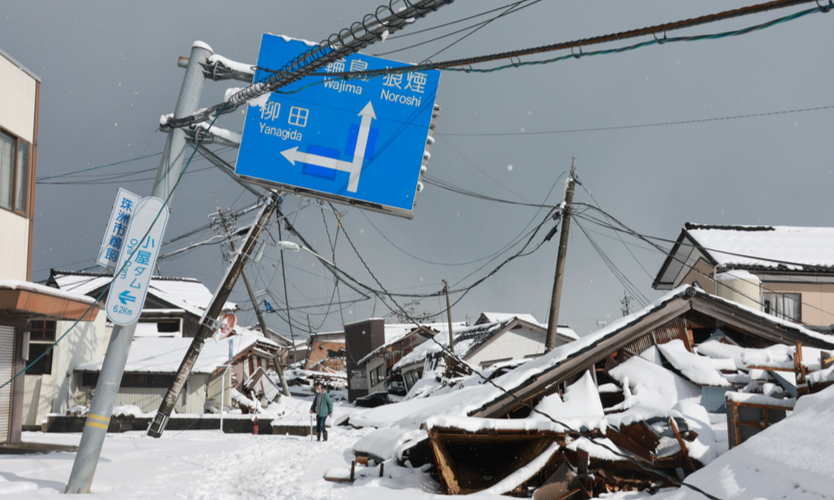Insured losses from Japanese quake estimated as high as $3.3 billion
- October 10, 2025
- Posted by: Web workers
- Category: Finance

Insured losses to properties from the Jan. 1 Magnitude 7.5 earthquake that struck near Japan’s Noto will be between $1.8 billion and $3.3 billion, according to estimates from technology and data company Verisk Inc.
Most of the heavy damage occurred in the Ishikawa prefecture and in particular the city of Wajima, including a large fire. Damage from ground shaking and liquefaction was seen in other prefectures such as Niigata and Toyama.
Tsunami waves of over one meter inundated many buildings along the shore, especially in Wajima, Suzu and Noto, according to Verisk’s event summary.
Verisk’s modeled insured loss estimates do not consider losses to uninsured properties; to land; to infrastructure; to automobiles; business interruption losses, both direct and indirect; workers compensation losses; losses to civil engineering (railway) risks; marine cargo and marine hull risks; aviation risks; transit warehouse risks; movable all risk; personal accident risks; loss adjustment expenses; and losses from nonmodeled perils, such as landslide.
Shallow reverse faulting in the earth’s crust caused the quake, according to the U.S. Geological Survey. While Japan is a seismically active region and most earthquakes occur off the east coast, the Jan. 1 earthquake occurred on the west coast of Japan.
Shallow earthquakes cause more damage than intermediate- and deep-focus incidents, according to Verisk. This coastal earthquake produced strong shaking on land and generated a tsunami.
Verisk noted that “building codes in Japan are among the most advanced in the world and … In the areas impacted by the Noto Peninsula earthquake, seismic code requirements are higher than those in the southern part of Japan.”



